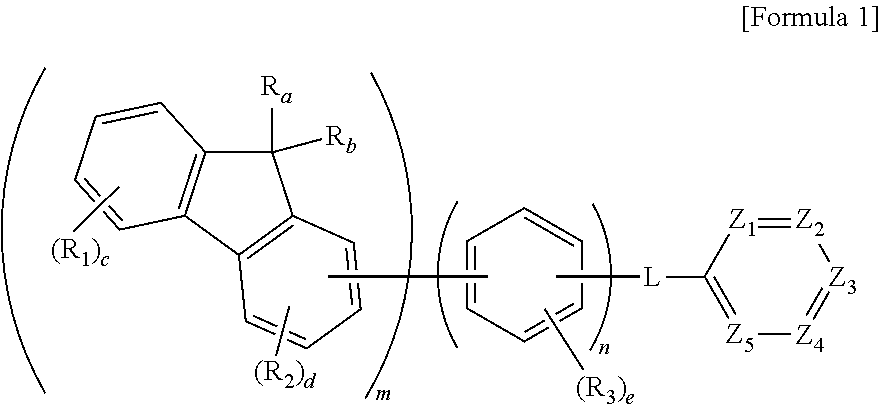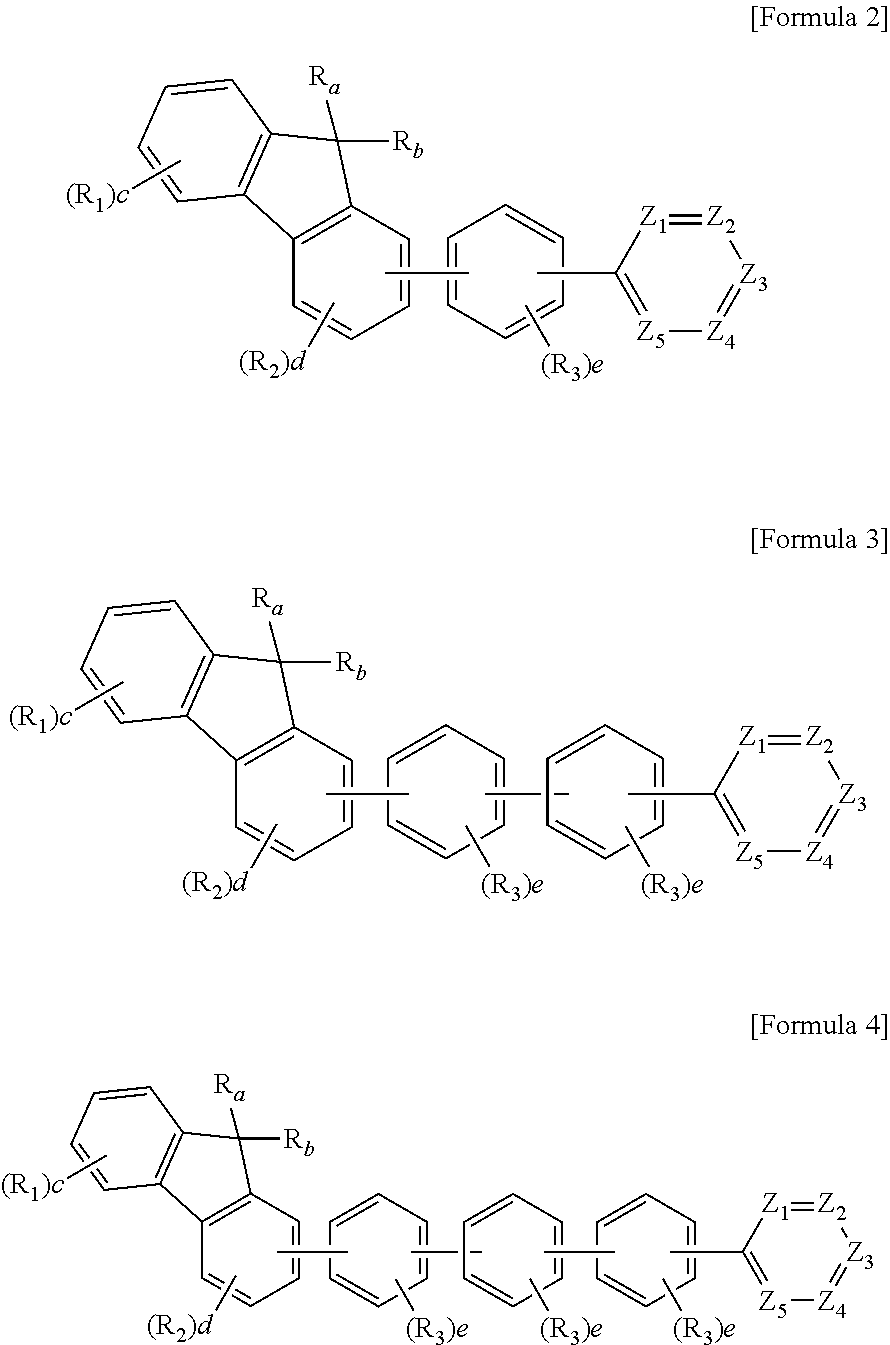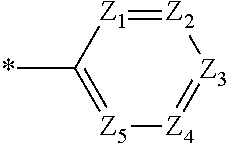Organic compound and organic electroluminescent element comprising same
a technology of organic electroluminescent elements and organic compounds, which is applied in the direction of luminescent compositions, organic chemistry, chemistry apparatus and processes, etc., can solve the problems of only exhibiting an unsatisfactory level of current efficiency and lifespan, poor thermal stability of materials, etc., and achieve excellent thermal stability and emitting properties, low driving voltage, and excellent emission performance
- Summary
- Abstract
- Description
- Claims
- Application Information
AI Technical Summary
Benefits of technology
Problems solved by technology
Method used
Image
Examples
synthesis example 1
nd 1 (2-(3-(9, 9-dimethyl-9H-fluoren-2-yl)phenyl)-4,6-diphenyl-1,3,5-triazine)
[0071]
[0072]Under a nitrogen stream, 2-(3-bromophenyl)-4,6-diphenyl-[1,3,5]triazine (10.0 g, 0.026 mol), 9,9-dimethyl-9H-fluoren-2-yl-boronic acid (7.9 g, 0.033 mol), Pd(PPh3)4 (0.95 g, 0.001 mol), and potassium carbonate (7.65 g, 0.078 mol) were mixed and then stirred under reflux with 1,4-dioxane (80 ml) and H2O (20 ml). After completion of the reaction, an organic layer was separated with methylene chloride, and dried over MgSO4. The solvent was removed from the dehydrated organic layer, followed by purification through column chromatography [hexane:MC=5:1 (v / v)] to afford Compound 1 (8.2 g, yield 63%).
[0073]HRMS [M]+: 501.62
synthesis example 2
nd 3 (2-[3-(9,9-Dimethyl-9H-fluoren-3-yl)-phenyl]-4,6-diphenyl-[1,3,5]triazine)
[0074]
[0075]The same procedure was conducted as in Synthesis Example 1, with the exception of using 9,9-dimethyl-9H-fluoren-3-yl-boronic acid (7.9 g, 0.033 mol) instead of 9,9-dimethyl-9H-fluoren-2-yl-boronic acid, to afford Compound 3.
[0076]HRMS [M]+: 501.62
synthesis example 3
nd 69 (2-[3-(9,9-Diphenyl-9H-fluoren-2-yl)-phenyl]-4,6-diphenyl-[1,3,5]triazine)
[0077]
[0078]The same procedure was conducted as in Synthesis Example 1, with the exception of using (9,9-diphenyl-9H-fluoren-2-yl)-acid (11.9 g, 0.033 mol) instead of 9,9-dimethyl-9H-fluoren-2-yl-boronic acid, to afford Compound 69.
[0079]HRMS [M]+: 625.76
PUM
| Property | Measurement | Unit |
|---|---|---|
| current density | aaaaa | aaaaa |
| structure | aaaaa | aaaaa |
| structures | aaaaa | aaaaa |
Abstract
Description
Claims
Application Information
 Login to View More
Login to View More - R&D
- Intellectual Property
- Life Sciences
- Materials
- Tech Scout
- Unparalleled Data Quality
- Higher Quality Content
- 60% Fewer Hallucinations
Browse by: Latest US Patents, China's latest patents, Technical Efficacy Thesaurus, Application Domain, Technology Topic, Popular Technical Reports.
© 2025 PatSnap. All rights reserved.Legal|Privacy policy|Modern Slavery Act Transparency Statement|Sitemap|About US| Contact US: help@patsnap.com



